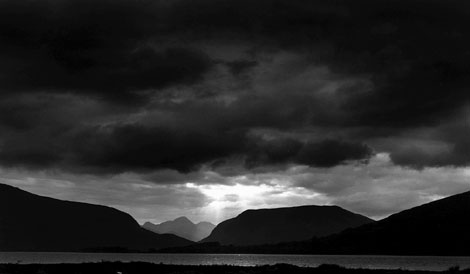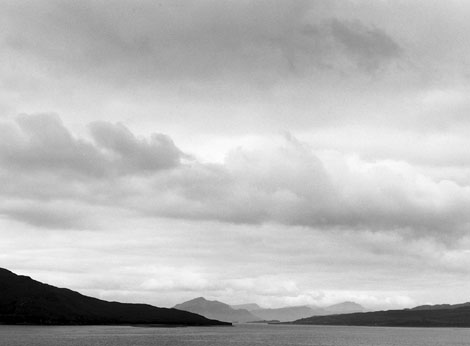

Some months ago I decided that I should look at what new films were available with a view to using something different - not, I hasten to add, that I was dissatisfied with my current film. The decision was probably motivated by a negative that I printed on a workshop in Ireland that produced a delightful quality and made me think that perhaps film technology had improved during the past five years.
The search started and I tried a number of films without making any final decision. One day at the end of August when I was chatting with our Editor, he handed me a box of Ilford's new Delta 100 Professional rollfilm and asked me to test it. It is available in 35mm, 120 rollfilm and 5 x 4. Armed with an 18 per cent grey card and a piece of my cat's blanket which just happens to be textured and the same reflectance as a grey card, I commenced my own Zone System tests on the new Delta 100 Professional film.
As a starting point I generally use the manufacturer's recommended film speed but I'm never surprised if my final result shows a different speed. Development times given by manufacturers are, in my experience, usually overstated by as much as 20 per cent, therefore I reduce the recommended time by that amount for the starting point. I will not go into the fine detail as to how to carry out the Zone Tests; suffice to say that the final results show my own film speed is EI 100 as indicated by the ISO rating - for me the exception rather than the rule. I rate FP4 at EI 90 instead of ISO125.
Ilford's recommended time and dilution in ID11 is 11 minutes at 1:1 at 20 degrees C. My Zone System tests indicated that the correct development time for my requirements was 10.5 minutes at 1:3. This is a significant reduction. I would suggest that my results support the need to carry out your own tests: no manufacturer can be aware of photographers' personal requirements.
Readers may wonder why I used a longish development time and a more dilute developer. The reason is that I do manipulate development both plus and minus by as much as 50/60 percent in extreme instances. 60 percent of 10.5 minutes is 6.3 minutes, but 60 percent of the 1:1 time would only be 4.2 minutes, which I consider to be borderline for control and accuracy. On the subject of development times Ilford do give times for both their own and two Kodak developers in the information printed on the box.

I decided to process the negatives normally, that is as per my Zone test, regardless of the lighting conditions that prevailed. The object was to determine how the film would deal with widely contrasting lighting conditions given the same development. Theoretically the darker landscape of the dramatic late light near Fort William should have received reduced development because of the high contrast, and the high key �big sky' photograph of the mainland from Skye should have been given plus development because of the low contrast. Both were given normal development and the resultant negatives still retain the detail required to produce satisfactory prints without too much darkroom manipulation.

When making the still life negatives (below) I deliberately under- and over-exposed by one stop, and the resultant negatives retained just enough detail in the shadows in the case of the under-exposure with the highlights still easily printable in the case of the over-exposure.

Clearly, Delta 100 Professional has got a worthwhile degree of latitude in exposure and development which was observed to be lacking in the original Delta 100 formulation. Having said that, always aim for the correct exposure and development to get the best possible results. All prints were made from the 6 x 4.5cm rollfilm and showed no sign of any grain, producing a full range of tones in the prints on Ilford Multigrade Fibre paper.
Delta 100 Professional will, in my view, prove to be an impressive addition to this list. The smooth tonality of the prints that I produced from Delta 100 used under varying conditions is testament to the forgiving nature of the emulsion. I will carry out further tests and abuses on it before deciding which film I will use in future. The signs are that I may be changing my loyalties.